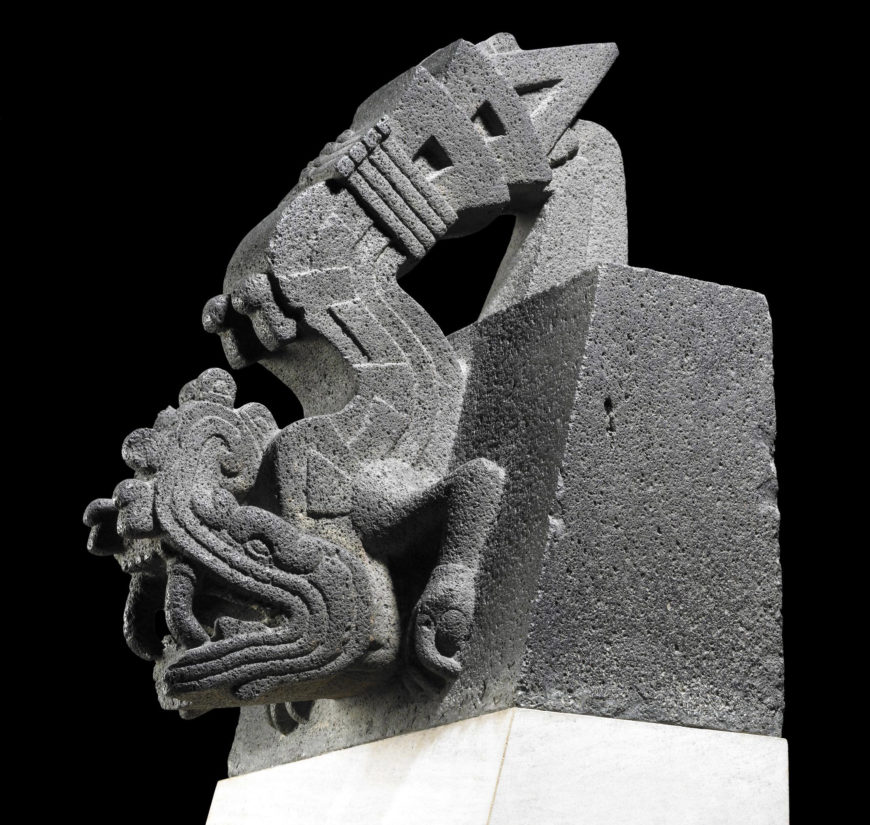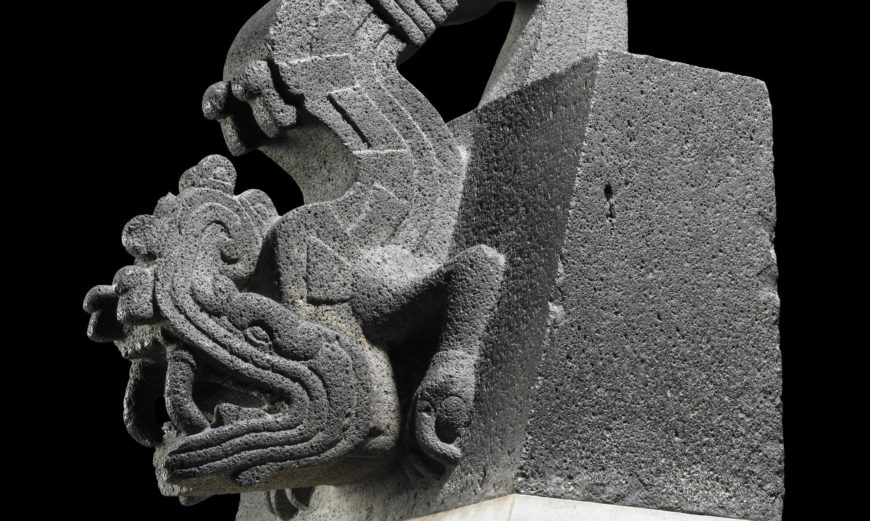
Stone figure of Xiuhcoatl, Mexica, 1325–1521, from Mexico, 77 x 60 cm (© The Trustees of the British Museum)
Fire serpent
The serpent played an important role in Mexica religion. [1] Many superb stone sculptures have survived, the majority of them representing rattlesnakes carved with striking realism and great skill. This magnificent sculpture has a blend of both realistic and mythical creatures. It exhibits all the elements characteristic of Xiuhcoatl, the Fire Serpent, with the head of a serpent, short legs finishing in claws and a curved snout. The end of the figure’s tail is formed by the conventional Mexican year symbol (xihuitl): a triangle, like the solar ray sign, and two entwined trapezes.
The Fire Serpent is commonly represented in Mexica art in a variety of media, including codices (screenfold books). It is used for example, as a back ornament for Xiuhtecuhtli, the fire god, and Huitzilopochtli, the Mexica patron god.

Stone figure of Xiuhcoatl, Mexica, 1325–1521, from Mexico, 77 x 60 cm (© The Trustees of the British Museum)
This piece was probably used to decorate a building. According to Guillermo Dupaix, a collector of Mexican antiquities, it came from Texcoco, a city on the east side of the lake on which the Mexica capital, Tenochtitlan, was founded. William Bullock, also a famous collector, acquired it in 1823 during his trip to Mexico and exhibited in London, at the Egyptian Hall in Piccadilly.
© The Trustees of the British Museum




